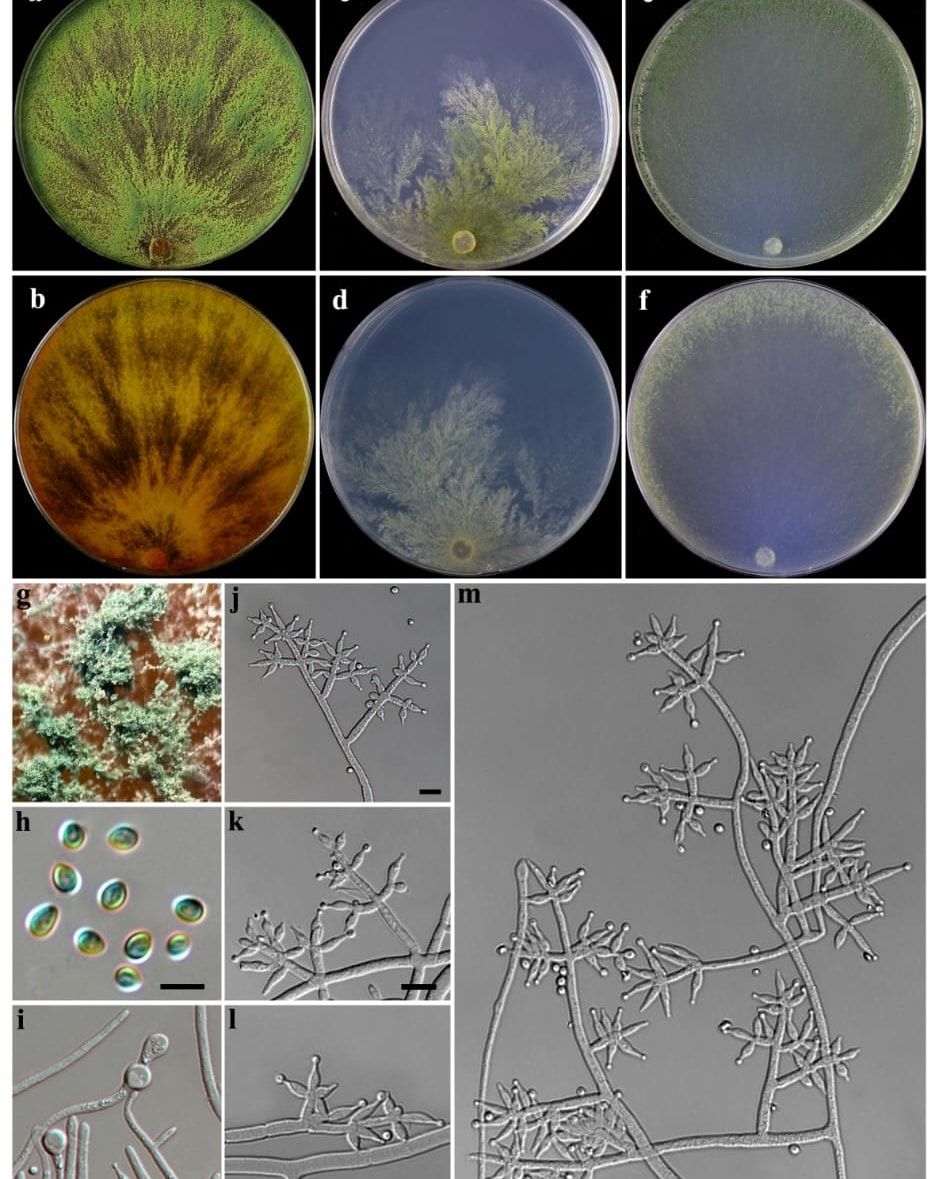Discovery of a New Fungus Species Trichoderma
Professor Dr. Mona Mahmoud Abdel Latif, Director of the City of Scientific Research and Technological Applications, announced the discovery of a new fungal species belonging to the genus Trichoderma, which has been identified and named after Egypt as Trichoderma egyptiacum.
This achievement comes within the city’s efforts to prioritize diverse scientific fields, provide expertise and support to researchers, and foster a stimulating and attractive environment for creativity and innovation. It also reflects the city’s pursuit of achieving sustainable agricultural development in line with the pillars of Egypt’s National Strategy for Science, Technology, and Innovation 2030.
Professor Dr. Mona Mahmoud Abdel Latif emphasized that this discovery represents an important addition to the global taxonomic diversity of this fungal genus. It enriches scientific knowledge on fungal biodiversity and opens new horizons for future research in taxonomy, microbiology, and their biotechnological applications. Furthermore, this newly identified species presents a promising opportunity for use in biofertilization and biological control against various plant pathogens.
Dr. Younes Mohamed Rashad, Associate Research Professor at the Desert Research Institute of the city and discoverer of the new fungus, highlighted the significant importance of this genus due to its extensive applications in biotechnological, industrial, medical, and agricultural fields. For instance, fungal species of this genus are widely valued in agriculture because of their efficiency in biofertilization and biological control against numerous plant diseases. Currently, more than 50% of commercial fungal biocontrol products worldwide are based on species of this genus.
In a pioneering study—the first of its kind in Egypt—Dr. Rashad and his research team investigated the biodiversity of Trichoderma species in Egypt. The study included 60 fungal isolates obtained from 119 plant and rhizospheric soil samples representing five different ecological environments across the country. This research led to the discovery of a new species belonging to the Harzianum group, officially named:
Y.M. Rashad, B. Natey & J.X. Deng, sp. nov. Trichoderma egyptiacum
This new species holds great promise for application in biofertilization and biological control of plant pathogens. Studying its biocontrol potential is crucial for promoting sustainable agriculture and reducing reliance on harmful chemical pesticides. It also presents valuable opportunities to investigate the properties of secondary metabolites produced by this fungus and their potential applications across biotechnological, industrial, and medical fields.
The new species was formally validated and approved by the German Mycological Society (DGfM) and published in its official journal Mycological Progress in June 2025:
https://doi.org/10.1007/s11557-025-02052-9
Additionally, it has been registered in the international fungal database MycoBank, and the new name has been disseminated across all global fungal databases. MycoBank, based in Germany, serves as an online repository for documenting and registering new fungal names and classifications, providing associated information such as descriptions and illustrations. It is considered an essential service for the mycological and broader scientific community, ensuring the accuracy and standardization of fungal nomenclature.



